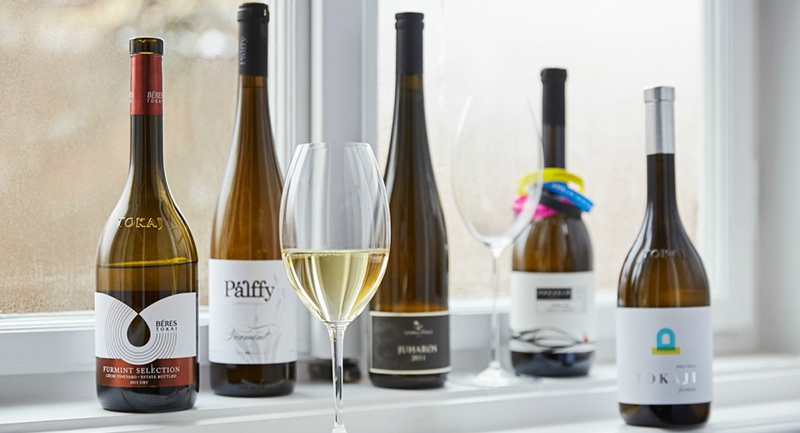
Best of Budapest & Hungary
Measure of Quality
Furmint in February is cool
The popularity of Furmint is on the rise and this indigenous variety of the Carpathian Basin takes center stage in February. Furmint can yield so many different styles: sparkling, light, refreshing, dry, more substantial, barrel aged and, of course, sweet wines ranging from late harvest to szamorodni and aszú. With such variety it’s no wonder that beginners and connoisseurs alike can find Furmints to delight their senses.
The origins of Furmint are still unclear but, considering that it was mentioned as early as 1611 in connection with Tokaj, it seems well justified to call it a Hungarian variety. Before the Phylloxera epidemic (1874-1914) several different versions of Furmint were cultivated all over Hungary but after the devastation it was pushed back to Tokaj and Somló. Thanks to its recent revival, today there are significant plantations in Eger, Mátra, at Lake Balaton, in Pécs and on the Great Hungarian Plain. Furmint is also planted in the neighboring countries of Slovakia, Austria, Slovenia, Croatia, Serbia and Romania. Some overseas countries have also started experimenting with the variety.
In fact, Furmint was long considered a variety for producing sweet wines. This view remained unchallenged until around 2000. It was in this year that the first premium quality single vineyard dry Furmint was produced. The shift was only partly motivated by international trends. While dry Furmint can be produced every year, szamorodni and aszú require special weather conditions. The two styles complement and strengthen each other, and recently dry Furmint has become a wine for everyday consumption. A variety with neutral aromas, Furmint is a great transmitter of terroir. It thrives on volcanic, chalky soils and the mineral character of the terroir is reflected in the wine. It preserves its vibrancy even in hot vintages and late harvested and botrytised berries also retain this trademark acidity. This is one of the reasons Furmint yields such age worthy wines, in fact, the longevity of aszús is almost unparalleled in the world of wine.
Its susceptibility to rot, a quality that in the case of other varieties is a distinct drawback, becomes a benefit: when infected by Botrytis cinerea the berries shrivel and dehydrate and these ‘aszú berries’ are the key to crafting the world’s most expensive to produce natural sweet wine, Tokaj Aszú. A universal grape variety that enables winemakers to adapt it to the style they desire: racy sparkling wines, lithe wines for everyday consumption, broad and complex single vineyard bottlings, sweets of all kinds – Furmint is a variety for all seasons. Elevation in steel tanks or wooden barrels fit it alike and there are promising experiments with amphoras. Furmints are often characterized by notes of apples, pears, quince, flowers, peaches, citrus, honey, herbs and sweet spices complemented by a distinctive saline, mineral streak. Barrel aged examples show the classic aromas of vanilla, smoke and tobacco.
Due to its diversity it offers countless food matching possibilities. Bright, fruit forward types go well with fish or dishes with herbs and vegetables. More substantial Furmints with some bottle age are great with game bird or even steak.
Furmint February
This is a campaign running in Hungary with the aim to get people more familiar with this specific white grape variety. Special wine dinners and furmint tasting packages are offered to wine lovers countrywide, following the main tasting event to be held this year on February 6 at Budapest's Vajdahunyad Castle in the City Park (Városliget) which houses the Hungarian Agriculture Museum. This year’s celebration is the 11th being held in a variety of ways throughout the country, starting with the Big Furmint February Tasting, offering more than 200 different Furmints. Visit the campaign's Facebook page for the list of exhibitors and for more information on ticket prices.







